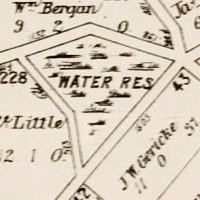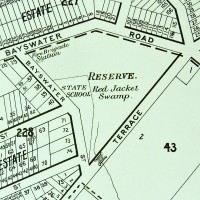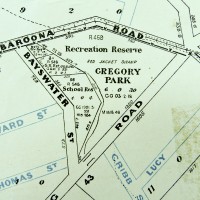Since starting this project, one thing I’ve been constantly looking out for is old maps. Unless there are some unpublished photos1 or drawings floating around (and I sincerely hope that there are), maps are the only visual record we have of the old Western Creek.
Looking at maps of Brisbane from the late 1800s and early 1900s, you can see the residential lots dissolve into singular paddocks, and the road networks dwindle to just a few major arteries. In the spaces that are left, you can often find details of the underlying landscape. The oldest maps sometimes depict slopes and ridges, some of which have since been reshaped or cut down. And in between the hills you will typically see an abundance of water features — not only rivers and creeks, but also swamps and ponds — that have long since been built over.
In the essay about the history of Gregory Park, I showed how the transition from Red Jacket Swamp to Gregory Park was depicted on maps from 1906, 1896 and 1884:
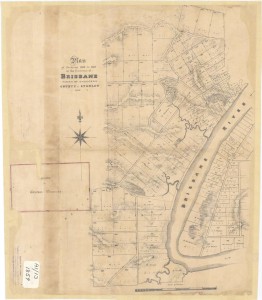
Plan of Portions 203 to 257 in the Environs of Brisbane, 1859. (Queensland State Archives Item ID620656)
Recently, I got hold of a map that takes this sequence back a further 25 years. The map is from 1859, and is called ‘Plan of Portions 203 to 257 in the Environs of Brisbane, Parish of Enoggera, County of Stanley, New South Wales’. You can see it at the Queensland State Archives (Item ID620656) and at the State Library (Record 727379). It covers the Milton Reach of the river, including all of Milton and Rosalie, much of Auchenflower, and parts of Paddington and Toowong. Further sheets in the series show the CBD and other parts of inner Brisbane.
This map is exciting because it predates the rapid development that took place in the area in the late 1800s, and it shows features of the landscape that are not on any other maps that I have seen. Most strikingly, it shows large shaded areas that correspond with what must have been swamps and/or lagoons. These appear at what is now Toowong Memorial Park, Dunmore Park, the area between Railway Terrace and McDougall Street, and of course, Gregory Park.
The name ‘Red Jacket Swamp’ once described a significant stretch of Western Creek from the river to as far as Fernberg Road. From about the 1880s, it came to be equated with the area that is now Gregory Park and Milton School — that is, bounded by Haig Road, Baroona Road and Bayswater Street. In all of the maps back to 1884, the swamp is depicted this way, ending abruptly at Haig Road, or in the case of the 1895 McKeller map, narrowing to a stream and passing under a small bridge. But on the map from 1859, the swamp runneth over!
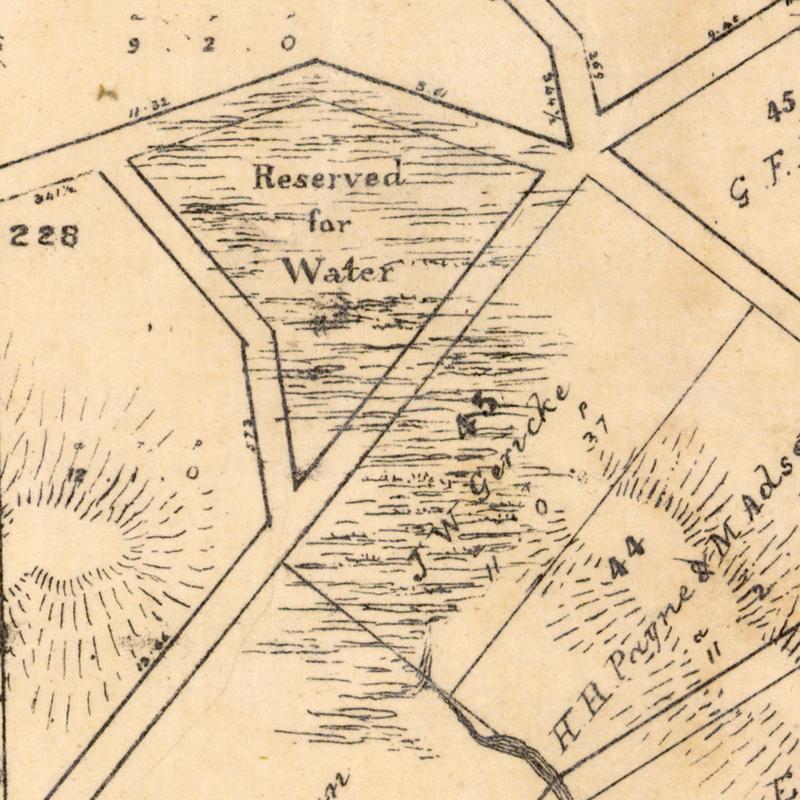
Present-day Gregory Park depicted in the 1859 map ‘Plan of Portions 203 to 257 in the Environs of Brisbane’ (Queensland State Archives Item ID620656)
In fact, it runneth all the way over to where Torwood Street is today, and it connects with the stream of Western Creek about halfway down the south-western edge of Frew Park. Its course is steered by the slope that rises in the middle of lots 43 (J.W. Gericke) and 44 (H.H. Payne & M. Adsett) — a slope that must have been built up and/or cut down years ago to make way for the tennis courts. It even runneth all over the roads, which I find rather interesting — these roads must not have been properly formed back in 1859.
Notably, the swamp is not depicted as running upstream of Baroona Road to where Rosalie Village now stands. This area was also once quite swampy — indeed, there are even references to the ‘Rosalie Swamp’2 — but presumably it was not as deep or damp as the area downstream.
Maps such as this one were not drawn for posterity. They were created to serve the immediate purposes of the people who were governing, developing and living on the land. Yet over time they have become invaluable historical documents, often capturing changes that are not recorded in any other form. Thank God for Surveyors!
Notes:
- In the State Library’s catalogue, there is a photos of the old Dunmore Bridge (where Coronation Drive crossed the mouth of the creek) and one of a sad looking ditch somewhere in the vicinity of Beck Street. These are the only photos I know of that show Western Creek. If you know of others, please get in touch with me! ↩
- The Brisbane Courier, 4 March 1886, p5. ↩

